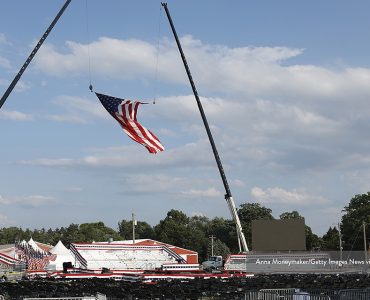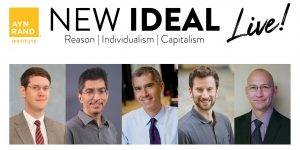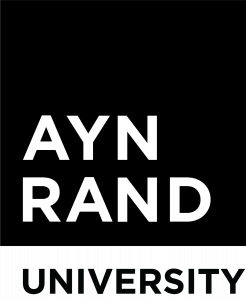Something weirdly revealing happened in July, when Canada launched a small immigration program for holders of the coveted American H-1B visa, an employer-sponsored visa for working professionals, such as engineers, physicians, software developers. These workers are among “the best and the brightest” who come to America.
The H-1B is hard to get. Out of 700,000 applications for 2024, only 85,000 will be approved. Yet, when Canada offered 10,000 spots for H-1B holders to relocate there — expecting the spots to be claimed within 12 months — it took only 48 hours.
Why are so many highly skilled foreign workers who are already in the U.S. so eager to move to Canada, especially after beating the odds to get to America in the first place?
The reason may surprise you: it’s because the U.S. immigration system is designed to push hard-working visa holders out — people who came here legally and are following the rules. The immigration system doesn’t want the best and the brightest to stay in America.
Consider Rohan, an engineer who decides he can’t achieve his dreams in his home country. But in the U.S., he thinks, hard work and ambition are rewarded, so he decides to try to come to America. He secures a job offer from a U.S. employer, which agrees to apply for an H-1B visa.
The H-1B process is extremely involved: Rohan’s employer has to pay hefty fees and file a mountain of paperwork just so Rohan can be placed in a lottery, along with hundreds of thousands of other applicants. His chances are slim — remember there are only 85,000 visas available. If he’s selected and his application is approved, he’ll be allowed to come to America for three years and maybe renew for three more years. If he’s not selected, it’s tough luck — it won’t matter how talented Rohan is or how much his U.S. employer wants him, he will just have to try again next year.
But imagine he does make it. Rohan aspires to build a life here, to excel in his career, to raise a family, to fulfill the American dream. Not so fast, says the U.S. immigration system: the rules are designed to make it difficult for immigrants to do that.
Rohan is ambitious and constantly seeks new challenges. He may at some point outgrow the company that sponsored him and want to move on. But finding more challenging, better-paying work is often not an option for H-1B holders: The cumbersome, uncertain, and expensive process keeps the pool of H-1B employer-sponsors very small. Even if Rohan were lucky enough to find a new sponsor, he’d have to go through the application process all over again. This makes it hard for ambitious people to advance their career while on H-1B visas.
Faced with these limitations on his employment options, Rohan thinks of opening a small business to supplement his income and keep growing his career. But to do this without being in violation of his visa, his lawyer tells him, he would have to form a company, assign a board of directors, and then have them hire him, which involves more immigration paperwork. Rohan can’t afford to build this legal infrastructure.
Trying to build a career and a life with this uncertainty takes a toll. Rohan doesn’t know if he’ll be allowed to stay in the U.S. after his visa expires. If he loses his job, he may be forced to leave America. He would have to find a new sponsor (which is hard) within 60 days — with no guarantee of obtaining the visa again. Rohan struggles to plan anything long-term. He dreams of buying a house, but the uncertainty holds him back: what if he buys a home and then loses his visa? He wants to start a family with his wife who also holds an H-1B, but they’re deeply conflicted about taking such an important step with all the uncertainty — will they have their lives uprooted in six months? nine months? two years?
For Rohan, this nightmarish uncertainty will never end, even though he’s in the U.S. legally. No matter how hard he works in his current job, how much he pays in taxes, how much value he creates, his chance of obtaining a green card is basically zero. This is because Rohan is from India, and the backlog for employment-based green cards for Indians is upwards of 100 years due to country caps. If Rohan were Chinese, it would take a couple of decades. If Rohan were British, it would take much less time: at least five years to meet eligibility, and then however long it takes for the immigration agency to process the green card, assuming his employer applies for one. Even in that best case scenario, putting life on hold for five years is an unreasonable ask.
H-1B holders encounter roadblocks at every turn. It’s hard to be ambitious when the system encourages stagnation. And economic downturns or sudden layoffs can mean the end of Rohan’s life in the U.S. With such perpetual uncertainty, it’s next to impossible for H-1B workers to plan and build a life in America.
Canada, on the other hand, offered 10,000 H-1B holders open work permits, basically without any of these restrictions. And they can apply for the equivalent of a green card in less than a year. It’s no wonder so many H-1B holders chose Canada over the U.S.
The rules for H-1B visas reveal the true intention of the U.S. immigration system: to push immigrants out, not to welcome them in. It is designed to make life as difficult as possible for people who come to America to work hard and build a better life.
'The U.S. immigration is designed to make life as difficult as possible for people who come to America to work hard and build a better life.' Share on XWhen the goal of the so-called immigration system is to discourage immigration and push hard-working people out, this means that it’s not enough to make some tweaks to the law. The whole premise of the system is backwards. This system doesn’t need to be reformed — it needs to be rethought entirely.
This article was originally published by the Southern California News Group.








